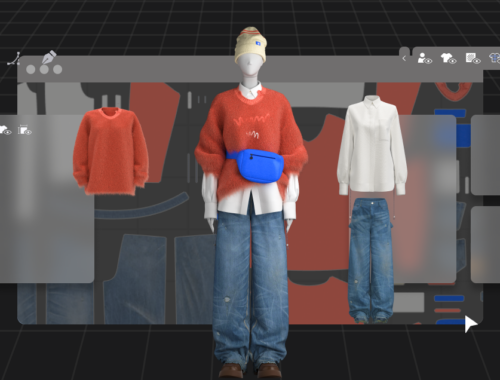How Racing for Money Can Mess with Your Head
A cycling study finds that the lure of a reward throws off pacing instincts
There’s a classic study from the 1980s in which researchers asked volunteers to hold a wall sit until they collapsed and paid them based on how long they lasted. The punchline: The bigger the prize pot, the longer the volunteers lasted. The limits of muscular endurance are apparently negotiable.
Studies like this seem intuitively obvious, and it’s tempting to generalize them to all endurance activity. The bigger the reward, the deeper you’re willing to dig and the more you’re willing to suffer. But there’s a huge difference between the comparative simplicity of a wall sit and the complex psychology of a typical race, where every moment involves decisions and revisions about exactly how hard to push to maximize performance without blowing up before reaching the finish. As a new study from researchers in Australia illustrates, that means prize money (and presumably other types of rewards) can be a double-edged sword.
The study, published in Frontiers in Physiology, involved 23 cyclists who rode a series of four time trials ranging in distance from roughly 4K to 20K. These were fairly serious cyclists, typically riding between 8,000 and 10,000 miles per year. Half the cyclists simply rode for the love of it, while the other half competed for a prize pot based on highest average power (relative to body weight) in the four trials, ranging from a first prize of AU$350 (about US$275) to $7 for 11th.
The researchers didn’t actually expect this relatively modest incentive to spur the cyclists to ride faster, says Sabrina Skorski, a sports scientist from Saarland University in Germany and the University of Canberra who led the study, thanks to the “high internal motivation of well-trained athletes.” And sure enough, the average time-trial performances were statistically indistinguishable in the money and no-money groups.
But there was a surprise in the results. The pacing patterns were strikingly different in the two groups. Endurance athletes in sports like cycling and running generally adopt a characteristic U-shaped pacing strategy: They start fast, settle into a slightly slower sustainable pace, and then accelerate at the end. That’s what the no-money group did, as expected.
The money group, on the other hand, started more slowly than their average page for the first part of the race, then settled back into a typical pacing pattern. They were able to make up a bit of ground in the later stages, so the overall times were similar, but they were unable to surpass the no-money performances.
Here’s an example of what that looked like, from the 20K time trial:
The graph shows average power output in the two groups; the solid line is the no-money group, and the dashed line is the money group. This is pretty much the opposite of what I would have expected. Instead of the cash lure triggering an overly enthusiastic starting sprint, the cyclists seemed to be holding back at the prospect of a reward. Why? In the absence of a mind-reading machine, we can’t say for sure. But Skorski and her colleagues offer a few possible reasons.
One is that the money made the cyclists care too much about their performance, causing them to, in essence, overthink things. There’s a rich literature on choking that suggests trying to consciously control actions you’d normally perform on autopilot makes you do them worse. If you’re a good golfer, you probably putt better when you’re distracted by something else than if you’re told to focus on your putting mechanics. Because the cyclists were so intent on pacing themselves perfectly to win money, this line of thinking goes, they took their pacing off the well-honed autopilot system until, sometime after the first split, they noticed that their effort was easier than it should be and resumed normal pacing.
A related but slightly different possibility is that they were thinking so much about the reward and how to win it that they had less mental bandwidth left to monitor the signals coming in from their muscles. Skorski cites the work of Noel Brick, a sports psychologist at Ulster University, on attentional focus, arguing that such mental distractions might make an effort feel easier, but, in fact, result in setting a slower pace. This is the same reason that listening to music or daydreaming might make a run more pleasant, but ultimately slower.
Brick, for his part, says the results are interesting, but difficult to interpret. For one thing, it’s not clear whether the cyclists really viewed a potential prize of a few hundred dollars as particularly motivating—a point that Skorski echoes. “When we informed the participants about the study design and the reward,” she says, “they honestly did not seem to care much, as they were mainly excited about the opportunity to test their performance in such a ‘professional’ environment.”
Still, the prize pot obviously had enough influence to affect their pacing. Brick points to self-determination theory, a framework psychologists use to understand the role of motivation. One of the consistent findings of self-determination theory is that people tend to perform better when they’re motivated by intrinsic rather than extrinsic goals. In an influential 1973 study, children spent less time drawing in a coloring book when they were offered a reward for coloring than when they simply did it for pleasure. Amateur cyclists who ride 10,000 miles a year are clearly blessed with abundant stores of intrinsic motivation—so perhaps trying to substitute an ersatz form of external motivation was bound to backfire.
For now, it’s not clear which, if any, of these stories are correct. If nothing else, the study highlights how little we know. “It’s actually really interesting that so little research in this area—extrinsic rewards, motivation, and endurance performance—has been completed,” Brick says. “There is clearly a lot we need to learn.”
It’s tempting, nonetheless, to draw a few tentative lessons from the findings. First, when it comes to pacing, trust your instincts, even when the stakes are high. Trying harder or focusing more intently may backfire.
Second, don’t chase shiny objects. Or rather, don’t let shiny objects—whether it’s money, age group prizes, or Facebook glory—displace the deeper and more personal reasons that you’re out there. Remember John L. Parker Jr.’s description of his fictional hero, Quenton Cassidy, in Once a Runner: “When he reached down through the familiar layers of gloom and fatigue, he generally found more there than a nameless and transient desire to acquire plastic trophies.”
Your own reasons may be murky and hard to articulate, let alone focus on. (“I am not sure if it would be possible to consciously focus on intrinsic motivation,” Skorski said when I asked her about practical takeaways.) But they’re in there somewhere. Trust them.
Discuss this post on Twitter or Facebook, sign up for the Sweat Science email newsletter, and check out my forthcoming book, Endure: Mind, Body, and the Curiously Elastic Limits of Human Performance.
Stop Driving Your Kids to School
You May Also Like

Block Blast: The Ultimate Puzzle Challenge
March 19, 2025
AI in Fashion: Revolutionizing Design, Shopping, and Sustainability
February 28, 2025